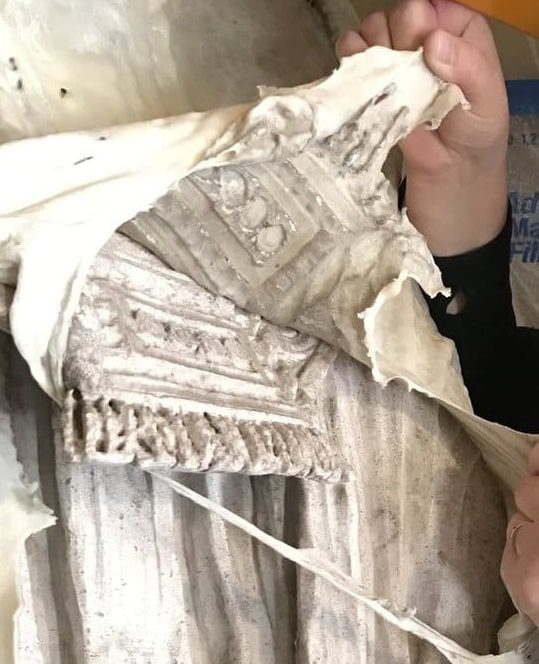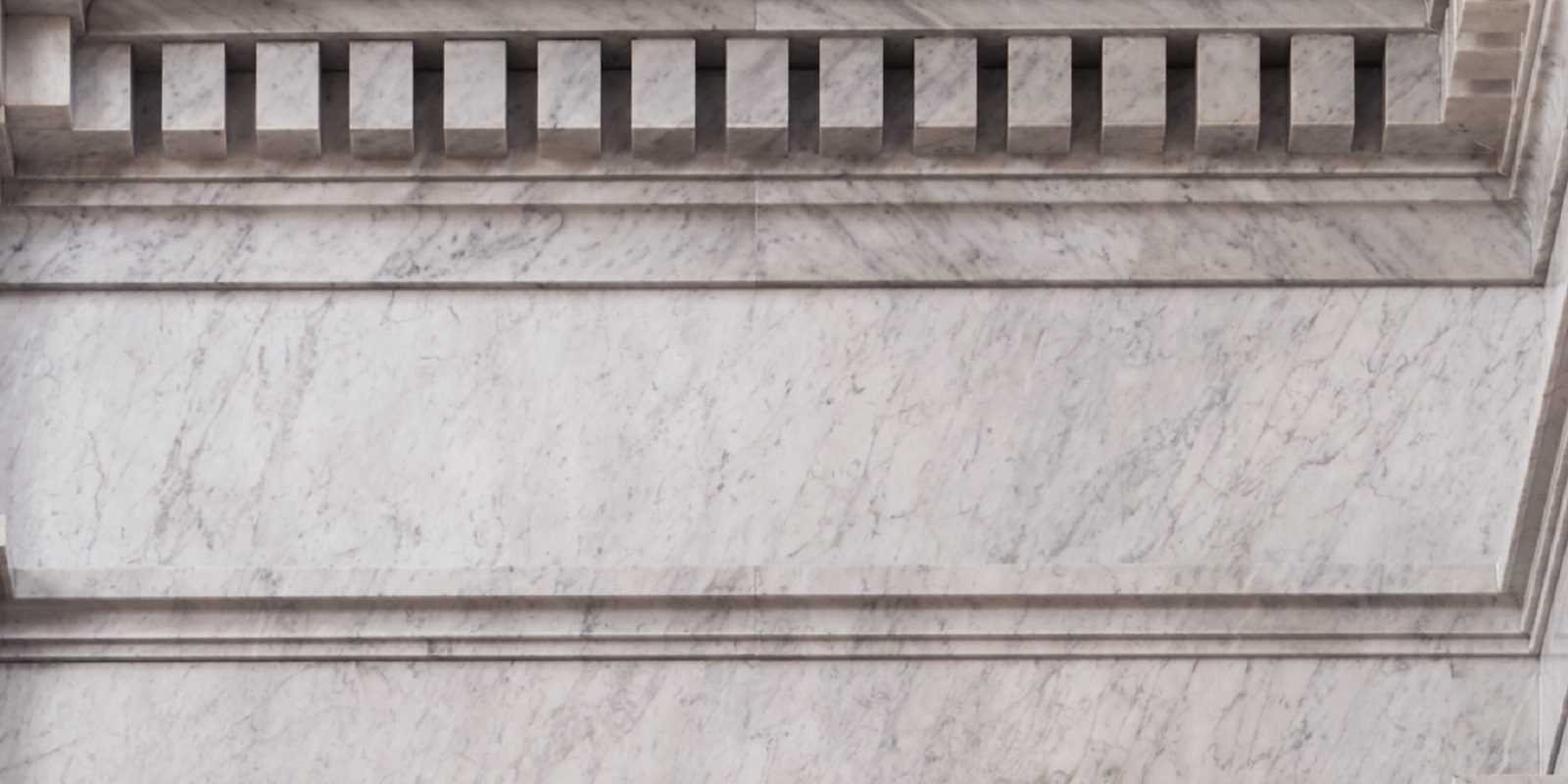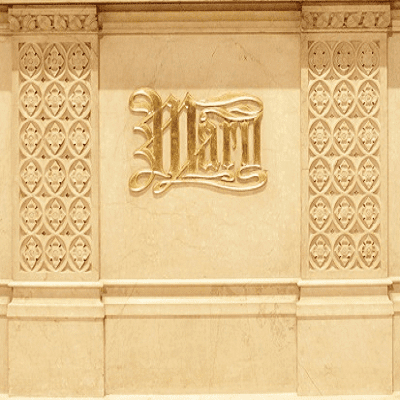Historic stonework has been an intrinsic part of architecture from the beginning of civilization. It acts as both a record keeper of a past culture’s appreciations and ideas as well as a modern tool for constructing churches and homes alike. To fully appreciate and learn from a building’s historic stone, it is important to regularly care for the material. Historic stone maintenance is a skill which can be utilized by both a professional conservator and a building owner. However, it is crucial to understand the correct methods to use in cleaning your building so as to avoid any negative side-effects. Here is some information to help guide you in establishing a maintenance plan and some tips for preserving your historic stone work.
A maintenance plan should consist of regular walkthrough/inspections and routine cleanings for the historic stone. Depending on the results of the inspections, issues may need to be addressed by either the owner or a professional stone conservator. This is especially true if there is a safety concern, in which case, professional service may need to be brought in to perform a more in depth conditions assessment.
Scheduling Walkthrough/Inspections
The most important way to maintain your historic masonry is to consistently inspect its condition. Scheduling a walkthrough to inspect the stone on a regular basis will help you identify and address any issues in the masonry before they spread. Visual inspections are the first line of defense and key in maintaining your building and historic stone. Here are some factors to remember and look for during a regular scheduled walkthrough inspection.
Knowing the Types of Stone
Certain types of stone will need more attention and care than others. Because there is a wide range of porosity among the various classes of stone, certain kinds will deteriorate faster due to an excess intake of moisture and dirt. For example, it is prudent to focus your attention more on limestone than granite when you are filling out your conditions assessment, as the former is more prone to decay and cracking. This also pertains to the placement of the stone in the building. If the material is exposed to outside conditions then it will be more susceptible to decay than interior masonry.
(Left) Marble in the Luzerne County Courthouse Lobby, (Right) Close-up of the Granite at Union Station in Washington, D.C.
Knowing How the Stone was Finished
There are different ways in which architectural stone is finished. Sealed, polished, honed, and natural stone each have a different susceptibility to dirtying. Sealer is often used on stone floors to protect the surface from having imbedded dirt. Polish also protects the stone but it is used primarily as a method of decoration. Honed stone has a cut, gritty surface which does not have any finish. Natural stone is untouched apart from its mining. Because honed and natural stone do not have a protective coating, it is more likely that they will absorb dirt and moisture faster than the sealed and polished stone. Therefore, taking a special focus on the more susceptible types will be required when you conduct your assessment.
Logging Issues with Timestamp
After inspecting each section of historic stone in your building, write down any prevalent information regarding possible defects or notes for cleaning into a log for future observations. Make sure to write the date for the walkthrough inspection so you can monitor how long it takes for any issues to develop. It is also important to take photos of any sections mentioned in the report. These can be used as a reference for understanding the descriptions of the issues in the log. Another way to visualize the problem and its location in your documentation is through drawings and diagrams. Keeping track of your stone’s condition will be vital for communicating with contractors regarding the timeframe of the problems’ progression and any prevalent issues. Once the maintenance inspection is complete, you can refer to or update the stone’s cleaning schedule. A regular cleaning of the masonry is necessary to prevent staining and other issues.
Routine Cleaning of the Stone
When it comes to the historic stone cleaning process, there are a few important factors to keep in mind. Knowing these factors is especially important if you have not consulted or received a cleaning specification from a specialist who deals with historic stone cleaning. By knowing the proper way to clean, and understanding what elements and materials to use on the stone, you can properly refurbish the masonry without causing damage and wear to the material.
Know the Type of Stone
Cleaning stone might seem like a simple task, however using the wrong methods could actually damage the material. Different materials such as granite and limestone require vastly different cleaning methods due to their levels of porosity. It is therefore prudent to understand what type of stone you are cleaning and the best materials suited for the project.
Cleaning Solutions and Materials
There are many different solutions and materials used for cleaning stone. Some of the best options which are often used by professional conservators are aqueous solutions, latex cleaners, and dry materials.
Aqueous Solutions
An aqueous solution is one of the best options for cleaning stone due to its composition. The mixture has a neutral ph. level, meaning that it has low acidity which is gentle on the surface of the stone. It is especially useful for cleaning masonry of a softer composition like sandstone. It also does not contain any surfactants because, if left on the stone for a long period of time, soap could cause damage to the material. A high quality aqueous cleaner that professional conservators utilize is the Prosoco Envivo Klean 2010.
Latex
Another great tool for removing embedded grime from the stone is a liquid latex cleaner. After you spray the mixture onto the stone, its cleaning agent will penetrate the surface and bring out the lodged dirt. As the latex dries, it will shrink and catch any dirt that comes to the surface.

Latex Stone Cleaning
Dry Materials
Dry materials such as a rag or duster can also be used although they are not as effective as the other tools. One of the easiest methods to employ as an owner is to use a dry chemical sponge cleaner like a dry erase to remove surface level dirt. However, this process will not remove embedded dirt.
Stone Statue Cleaning in Progress Using a Sponge at St. Patrick’s Parish
Cleaning Solutions and Materials to Avoid
There are some cleaning solutions and materials that should generally be avoided in any type of stone maintenance. Using soap such as dish detergent or hand soap can be detrimental to the surface of the stone. If left on the stone for a long period of time, soap can extract the salt from the rock and let it rest on the surface, causing what conservators call sugaring. When sugaring occurs, a white residue appears on the surface, detracting the beauty and aesthetic from the stone. Another problem to look for is caustic and acidic mixtures. Caustic cleaning solutions include bleach and should be avoided. Too acidic of a solution could also severely damage and erode more porous stone like sedimentary rock. Other abrasive methods like sand blasting and power washing could hurt a stone’s surface, especially if the stone is of a softer type.
When to Call a Professional Stone Conservator
While it is important for building owners to maintain their historic stone on a regular basis, there are some issues and factors which make the outside help of a professional conservator necessary for a proper maintenance check. Firstly, if there is any issue with cracking and chipping stone or mortar than it is vital to call in a contractor to replace your stone. If there is severe staining from dirt and surface level cleaning methods are not suitable, then a conservator should be hired. In some cases, it might be necessary to remove the wax sealer from the stone surface which should not be done by the owner.
Historic stone cleaning and preservation can be a laborious and exhausting process so it is often best to ask for help when there are deeper level stains or damage in your masonry. However, as an owner you can do your part by committing to regular assessments of your stone and surface cleaning so as to best preserve you building’s aesthetic. For more information on the process of stone cleaning and restoration visit our blogs on stone.













